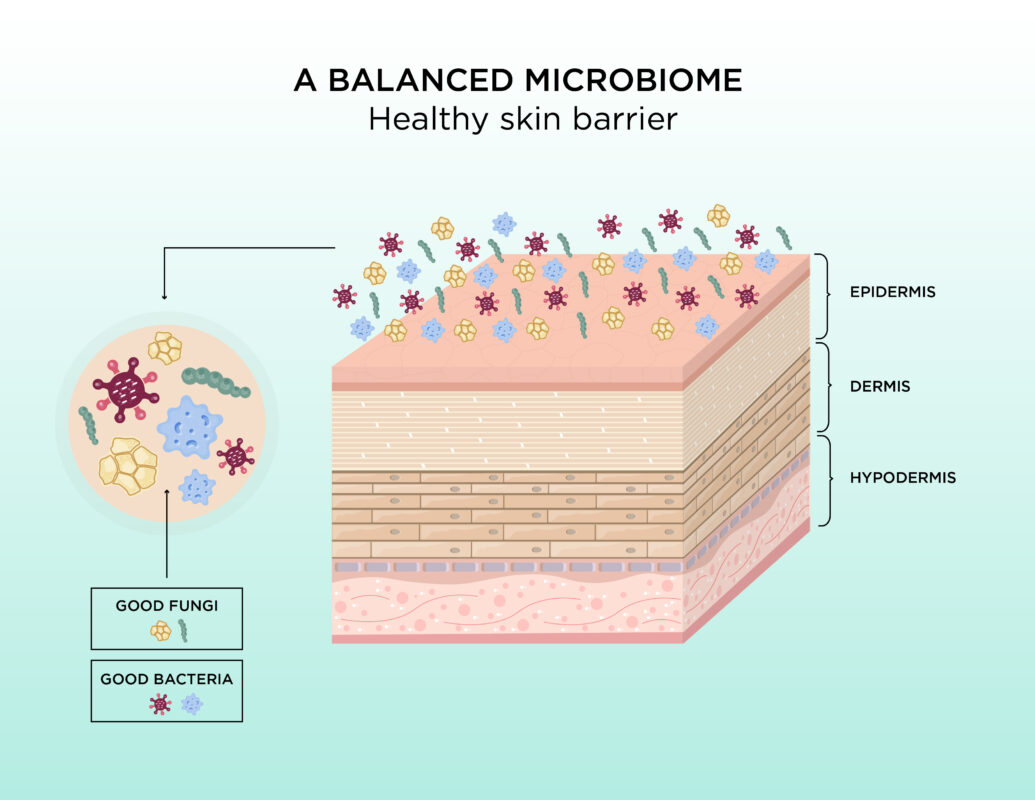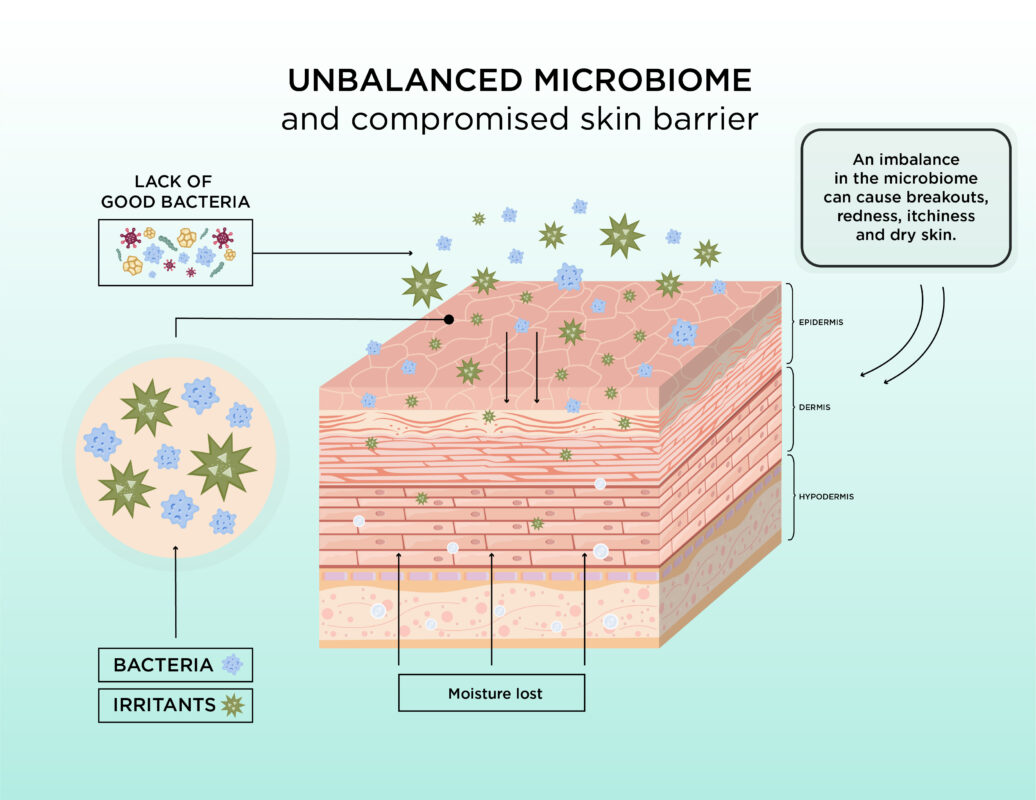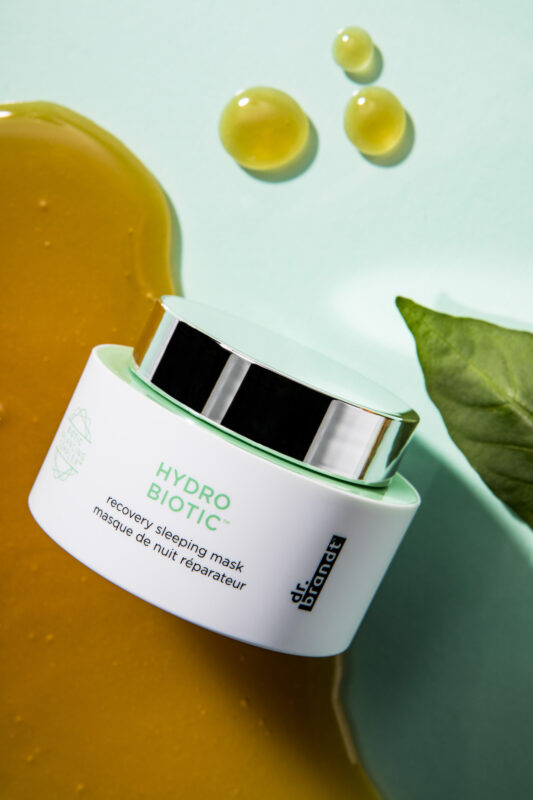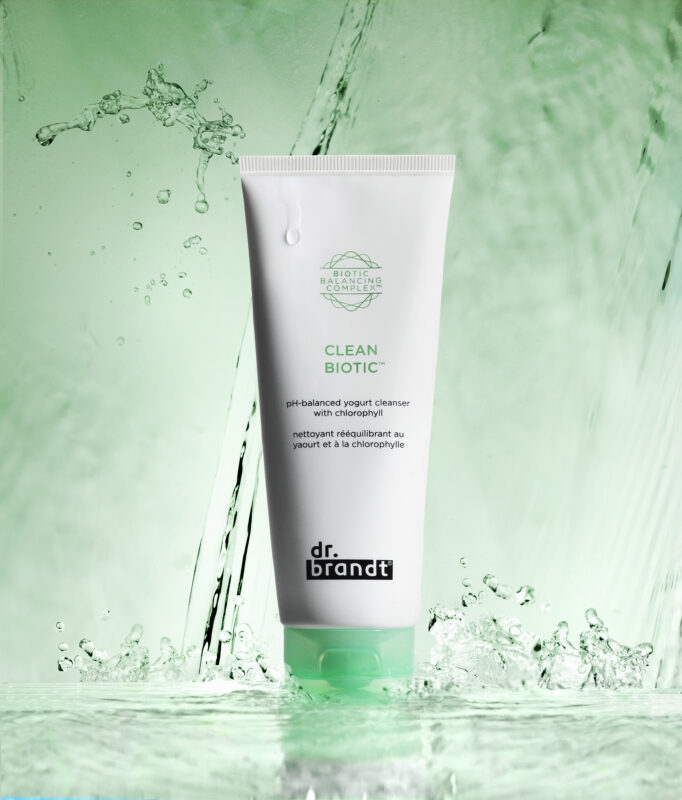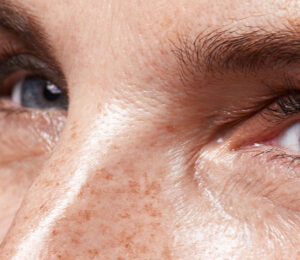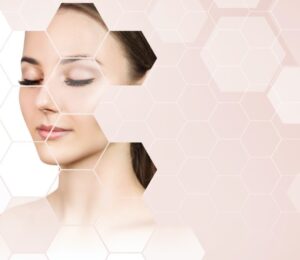The microbiome: the connection between your gut and your skin
Did you know that there are countless single-cell organisms living on and throughout the human body? While it sounds a bit alarming, much of these microbial communities are made up of good bacteria that are an essential component of human physiology—both in health and in disease. Thanks in large part to the human microbiome project which began in 2007, we now know that these ecosystems can have a significant impact not only on the human gut, but also on the immune system, skin, behavior, and more.
What does it have to do with your skin health, your well-being, and the products you are using?
Our Skin Advisory Board member, Dr. Katlein Franca takes you through some of the clinical facts about the microbiome – the living and ever-changing protective layer of your skin.
What is the microbiome?
A microbiome is a community of microorganisms and their genes living in or on the human body, such as bacteria, fungi, or viruses.
Microbiota refers to microorganisms (by type) living in a specific environment.
These two terms, microbiome and microbiota, are often used interchangeably, but microbiota refers to the actual microorganisms and microbiome are the microorganisms and their genes.
How to improve the gut microbiome?
Your gut microbiome can be modulated and improved mainly by these four factors:
DIET: Diet plays a significant role in shaping the microbiome, and experiments show that dietary alterations can induce significant and temporary microbial shifts within 24 h. (1) Examples of foods that are beneficial to gut microbiome include artichokes, leeks, onions, and garlic, which all contain high levels of prebiotic fibers and unsweetened yogurt; kefir, raw milk, cheeses; and soybean-based products such as soy sauce, among others. Improve your gut microbiome by reading these food myths.
PROBIOTICS AND PREBIOTICS: In the past decade, research on the gut microbiome has rapidly progressed and has been marked by increased interest in probiotics and prebiotics as means to modulate the gut microbiota. (2)
Probiotics are the live microorganisms such as bacteria and yeasts that confer a health benefit on the host. They can restore and change the composition of the gut microbiome, resulting in improvement or prevention of gut inflammation and other intestinal or systemic diseases. (3)
Prebiotics are non-living, non-digestible by human ingredients that serve as food for the bacteria living within the gut.
EXERCISE: Recent studies suggest that exercise can enhance the number of beneficial microbial species, enriching the microflora diversity, and improving the development of commensal bacteria.
Microbiota is responsive to the homeostatic and physiological variations due to exercise. (4,5)
MEDITATION: Meditation is gaining popularity in clinical settings, and its treatment efficacy is being studied for a wide array of not only psychological but physiological ailments as well. A study performed by Bermon et al. investigated the Effects of Stress and Meditation on the Human Microbiota, and the authors found that meditation regulates the stress response, suppresses chronic inflammation, and maintains a healthy gut- barrier function. (6)
Are microbes the same in the gut as on the skin?
The gut and skin microbiota are made up of trillions of microbes, derived from thousands of different strains, that live together like an intricate ecological community. (7) Different parts of the body, such as skin and gut, contain diverse species and various proportions of the same species. The bacterial inhabitants of the human gastrointestinal tract constitute a complex ecosystem. The four dominant bacterial phyla in the human gut and in the skin are Firmicutes, Bacteroidetes, Actinobacteria, and Proteobacteria (8,9) However, the proportions differ vastly: for example, whereas Actinobacteria members are more abundant on the skin, Firmicutes and Bacteroidetes members are more abundant in the gastrointestinal tract. (10)
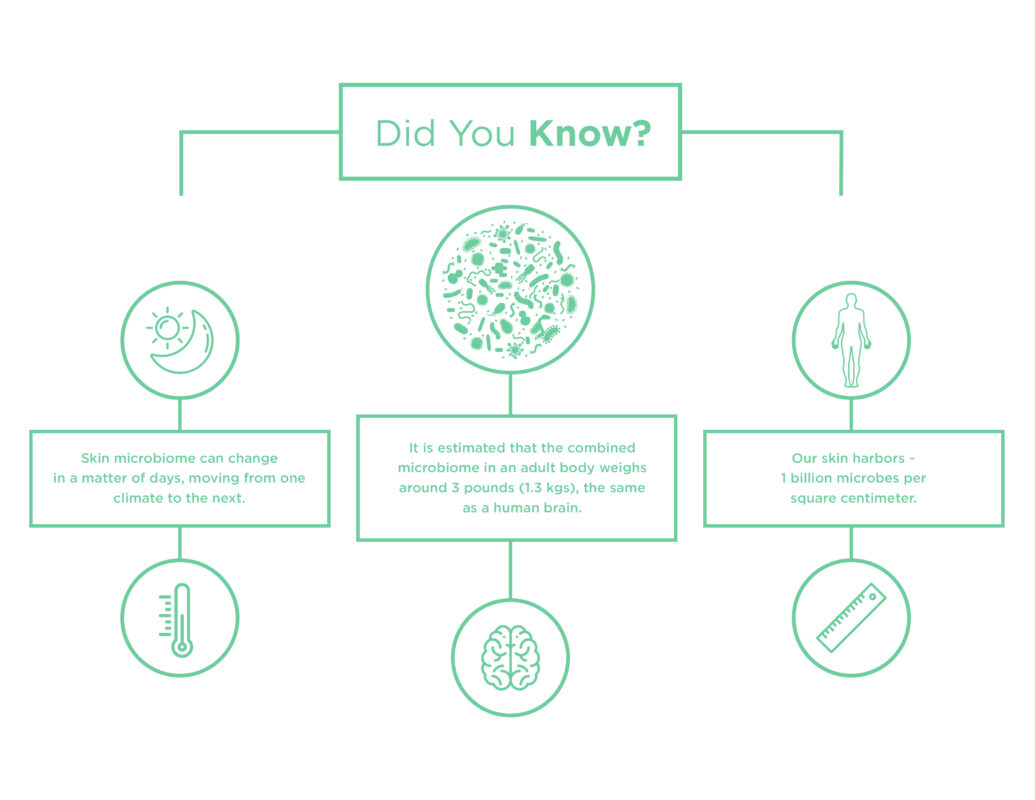
How microbiota benefit the body and skin?
The gut microbiota affects all aspects of human health; however, scientific evidence, the mechanisms of action, models and technologies vary considerably from one benefit area to the other. The gut microbiota has important roles on anxiety, mood, cognition and pain which is exerted via the gut-brain axis as well as important metabolic and immune benefits. Prebiotics and probiotics have been used to regulate the microbiota and to treat a range of conditions including bowel diseases and allergic reactions and also have been used to prevent diseases such as acute respiratory tract infections and antibiotic-associated diarrhea (11, 12) The beneficial effects of gut bacteria on skin health have been explored in several studies. Probiotics and prebiotics have shown positive effects on the prevention and/or treatment of skin diseases such as acne, atopic dermatitis, and psoriasis. (13)
Our Prebiotic collection focuses on the balance of your microbiome. Learn more about them:
1- Singh RK, Chang HW, Yan D, et al. Influence of diet on the gut microbiome and implications for human health. J Transl Med. 2017;15(1):73. Published 2017 Apr 8. DOI:10.1186/s12967-017-1175-y
2- Sanders, M.E., Merenstein, D.J., Reid, G. et al. Probiotics and prebiotics in intestinal health and disease: from biology to the clinic.Nat Rev Gastroenterol Hepatol 16, 605–616 (2019). https://doi.org/10.1038/s41575-019-0173-3
3- Hemarajata P, Versalovic J. Effects of probiotics on gut microbiota: mechanisms of intestinal immunomodulation and neuromodulation. Therap Adv Gastroenterol. 2013;6(1):39–51. doi:10.1177/1756283X12459294
4- Mika A., Van Treuren W., González A., Herrera J. J., Knight R., Fleshner M. Exercise is more effective at altering gut microbial composition and producing stable changes in lean mass in juvenile versus adult male F344 rats. PLoS ONE. 2015;10(5) doi: 10.1371/journal.pone.0125889.e0125889
5- Bermon S., Petriz B., Kajeniene A., Prestes J., Castell L., Franco O. L. The microbiota: an exercise immunology perspective. Exercise Immunology Review. 2015;21:70–79
6- Househam AM, Peterson CT, Mills PJ, Chopra D. The Effects of Stress and Meditation on the Immune System, Human Microbiota, and Epigenetics. Adv Mind Body Med. 2017 Fall;31(4):10-25.
7- Mohajeri MH, Brummer RJM, Rastall RA, et al. The role of the microbiome for human health: from basic science to clinical applications. Eur J Nutr. 2018;57(Suppl 1):1–14. doi:10.1007/s00394-018-1703-4
8- Liu Y, Tran DQ, Rhoads JM. Probiotics in Disease Prevention and Treatment. J Clin Pharmacol. 2018;58 Suppl 10(Suppl 10):S164–S179. doi:10.1002/jcph.1121
9- Salem I, Ramser A, Isham N, Ghannoum MA. The Gut Microbiome as a Major Regulator of the Gut-Skin Axis. Front Microbiol. 2018;9:1459. Published 2018 Jul 10. doi:10.3389/fmicb.2018.01459
10- Ellis SR, Nguyen M, Vaughn AR, et al. The Skin and Gut Microbiome and Its Role in Common Dermatologic Conditions. Microorganisms. 2019;7(11):550. Published 2019 Nov 11. doi:10.3390/microorganisms7110550
11- Khanna, Sahil; Tosh, Pritish K (2014). “A Clinician’s Primer on the Role of the Microbiome in Human Health and Disease”. Mayo Clinic Proceedings. 89 (1): 107–14. doi:10.1016/j.mayocp.2013.10.011. PMID 24388028.
12- Gorbach SL. Microbiology of the Gastrointestinal Tract. In: Baron S, editor. Medical Microbiology. 4th edition. Galveston (TX): University of Texas Medical Branch at Galveston; 1996. Chapter 95. Available from: https://www.ncbi.nlm.nih.gov/books/NBK7670/
13- Grice EA, Segre JA. The skin microbiome [published correction appears in Nat Rev Microbiol. 2011 Aug;9(8):626]. Nat Rev Microbiol. 2011;9(4):244–253. doi:10.1038/nrmicro2537

